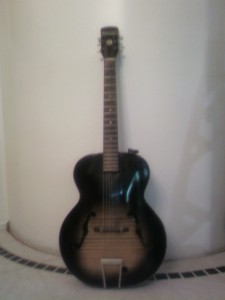Folders inside folders on top of folders – Organizing your Reaper project.
Note on my system: For this demo I used Reaper 6.42 with Voiceover on Mac running Big Sur.
What are folders anyways?
A folder in Reaper is a track that can contain other tracks. It really is that simple. A folder may contain a number of backing vocals for example. Their audio is routed through the folder to where you need it to go. Add a plugin to the folder and all those tracks are being effected by that plugin. Turn up the volume on the folder and all those tracks get louder. Pan it to the left and… you guessed it, all those tracks pan to the left. Pretty nifty isn’t it? 😀
In other programs something like this might be called a bus, or a sub-mix perhaps. For the most part they serve the same purpose.
How useful folders are depends on how you like to prep and organize your tracks. Maybe it can be just a way to separate production audio and music from the voiceover. Or you might use them as buses for mixes with guitars, drums, keys and all that good stuff. Folders in reaper are a utility. How you use them and have success with them is totally up to you.
Reaper’s folder function is just another tool that enables you to setup your project so that it makes sense to you. It’s a tool. Learn one tool at a time when and if you have a need for it. With time, that toolbox will bee full of good stuff.
Okay, so how do I use that stuff?
Shortcuts of note:
Shift Enter toggles a track between Track, Folder, and end of folder.
Option page up and page down navigate between folders.
Enter toggles the folder track between Open, small, and closed.
Folders can be copied, cut, and renamed just like any other track in Reaper.
They have volume, pan, and any other function that any other track has such as the ability to automate and send the signal to any other track for effects or further bussing.
Listen to the demo:
Download mp3. If download doesn’t start, Use Ctrl Opt M, then choose to Download Linked File
About tutorials on House of Imp:
Note that this demo is created on a Mac. But I will when needed explain the differences best as I can.
My reason for recording this specific demo is that
Despite their simplicity, folders can trip you up. And Plus, the thought of using folders can seem a bit daunting. I’m here to tell you they don’t bite.
Remember: Use F4 and F12 for the action list and shortcut help respectively. These keys are your friends.
A note on demos and tutorials: Some of my demos are created quickly because someone needed a demonstration quickly or an answer to a question while in a bit of a panic. This means that production and editing can be minimal or non-existent. It also means that they don’t go into depth and do not cover all options or related issues.
Listen to the demo:
For questions and demo requests, you canAbout the producer:
If you love what I do and want to make sure i keep doing it, feel free to
Buy me a coffee!
Jenny K. Brennan


